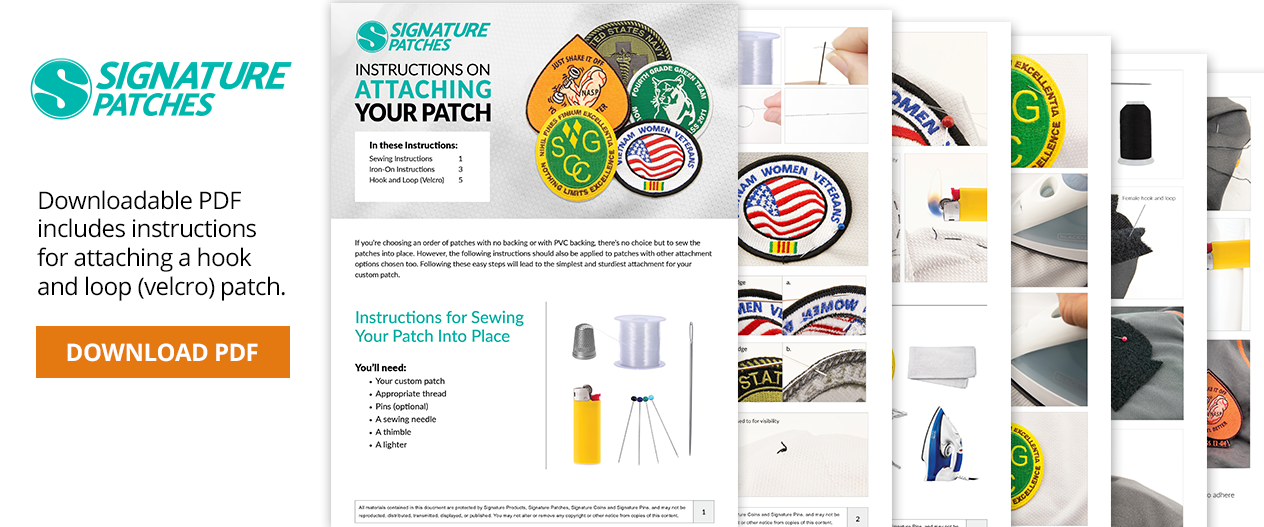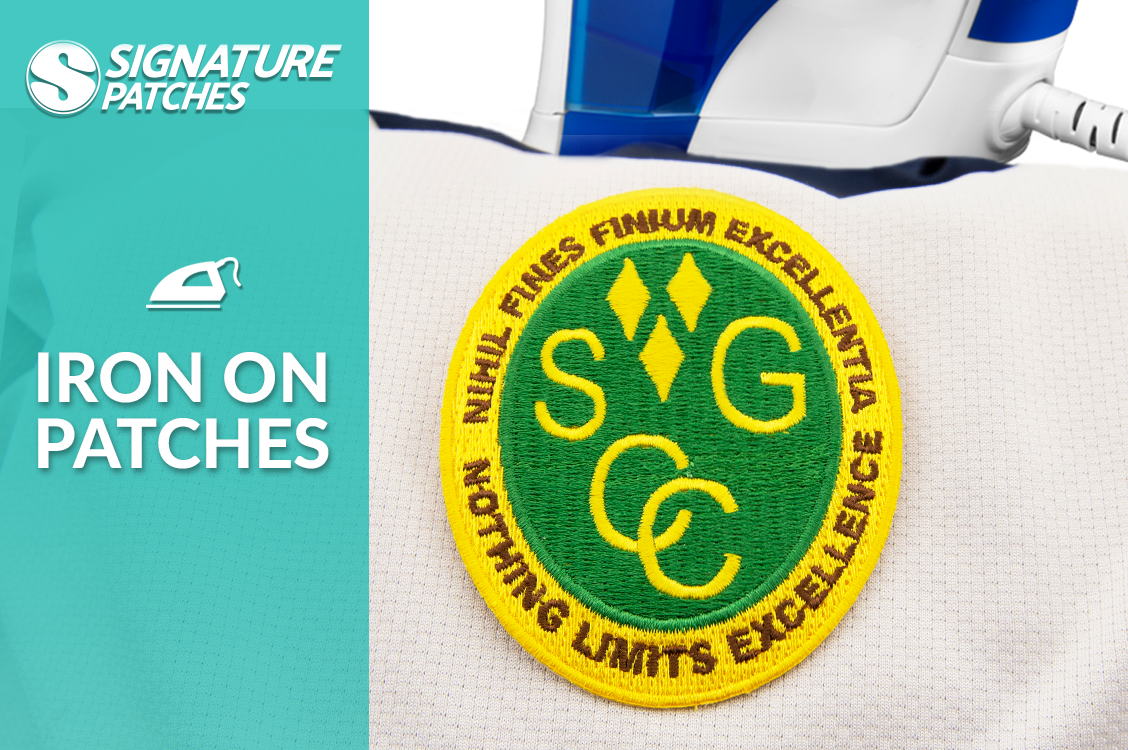
Heat It Up and Stick It On: Iron On Patches
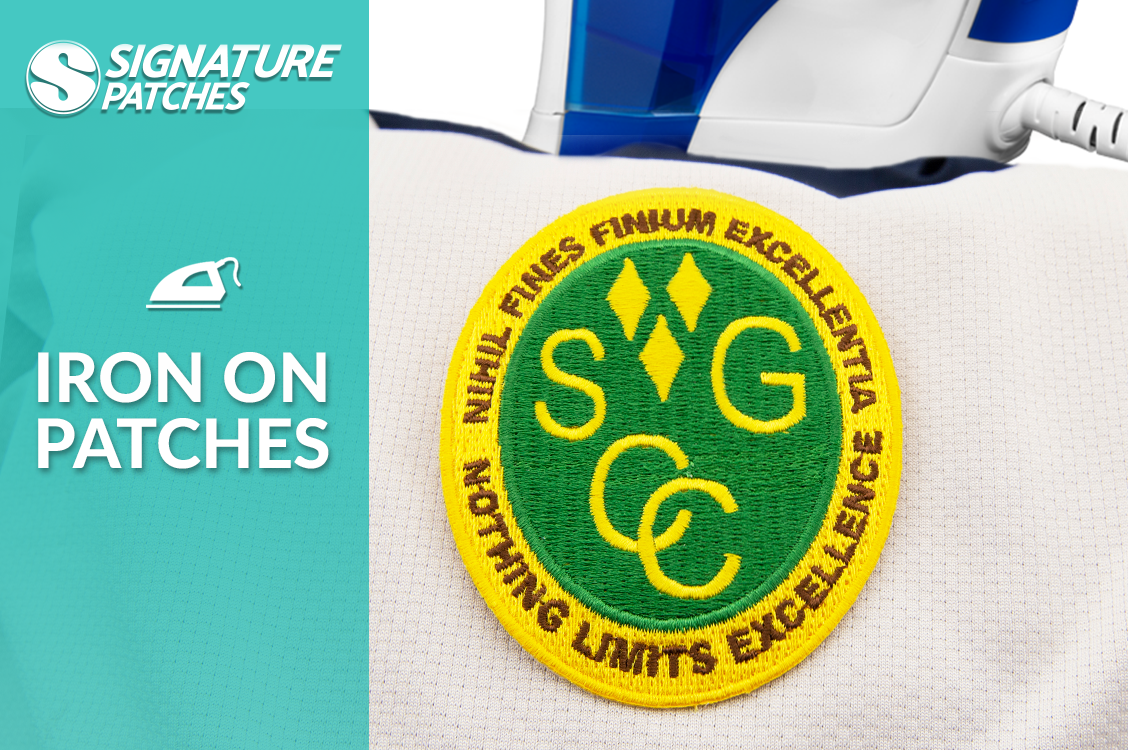
The Quick and Easy Attachment Option
Attaching your custom patch is about as easy as it could be. But what if you need to attach the patches to a collection of uniforms and you don’t have the time to break out the old sewing kit? For customers looking to get their patches in place quickly and efficiently, our iron on attachment option is the best way to go.
Sewing your patch into place is one thing, but attaching a patch with an iron requires slightly different supplies. More than just knowing how to attach the patch, you also need to know when to iron and when not to iron, as well as what types of patches can be combined with this attachment option and which can’t. To make sure you never mess up and ruin another patch again, read on and learn as much as possible about iron on patches.
Attaching an Iron On Patch
We get a lot of questions about iron on patches. Sewing a patch is pretty simple and straightforward; you get some thread and a sewing needle and go to town. But with iron on patches, the very real and reasonable fear of burning the patch and potentially ruining both it and a perfectly good article of clothing can often make customers a little gun shy.
Luckily, ironing your patch into place couldn’t be any easier. You don’t need any special equipment, you don’t need any unique skills, and when done properly, the process shouldn’t take any longer than 15 seconds per patch, so you don’t even need a lot of time. Instead, you’ll need the following supplies and to heed these instructions.
You’ll need:
- Iron on patch
- Pins
- An iron (a heat press is not required to attach an iron on patch)
- Ironing board or other flat surface
- A towel or sheet (optional)
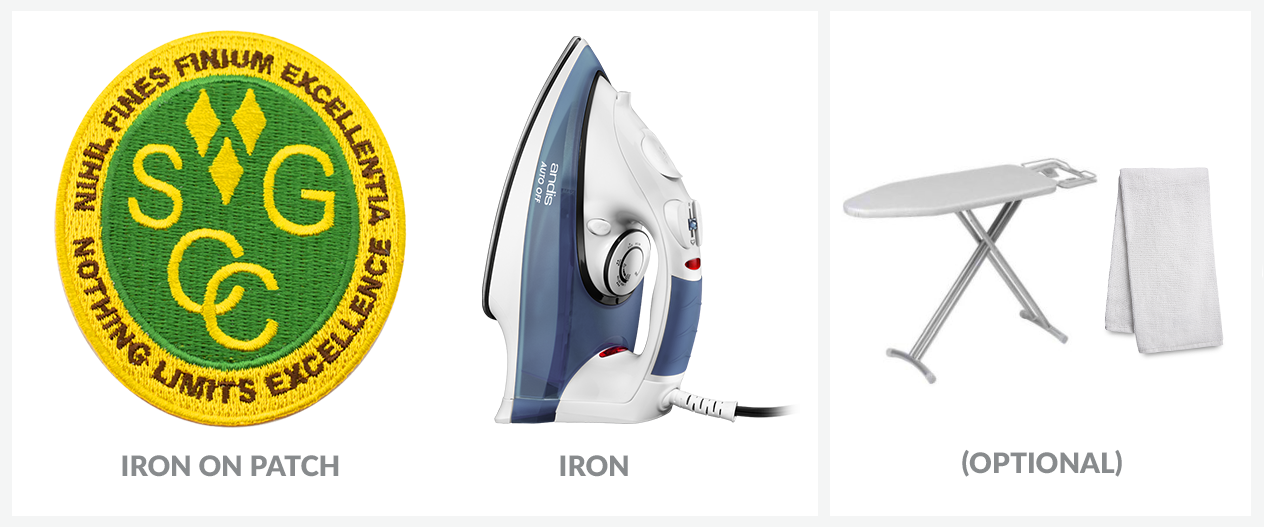
- Make sure your iron is turned on and the steam setting is activated.
- The temperature settings of irons vary, but you should be aiming for roughly 300 degrees (230 degrees if you have a woven patch).
- Choose where you want your patch to go and make sure the area is as clean of debris and lint as possible. Also, if possible, iron the area to make sure it will lay flat while applying the patch.
- Secure the patch in place with pins so it won’t move around, and flip the item you’re attaching the patch to over so that you’re looking at the underside of the item and working on the back of the patch.
- This allows you to apply heat directly to the adhesive without damaging the patch.
- With a firm pressure, move the iron over the spot you’re attaching the patch, ensuring it heats evenly. Only apply heat for 10 - 15 seconds at a time.
- Leave the patch to cool for 30 seconds before checking it’s placement by touching the sides and attempting to lift the patch. If the patch isn’t holding, repeat steps three and four. If it does hold, remove the pins, and you’re all set.
Note: If ironing the back of your patch is too difficult (for example, if you’re attaching your patch to a bag or a hat), you can place a towel or a sheet over the top of your patch and iron it through this protective barrier. Keep in mind that the heat has to move through the towel and melt the adhesive on the back of the patch, so a little patience is needed with this process.
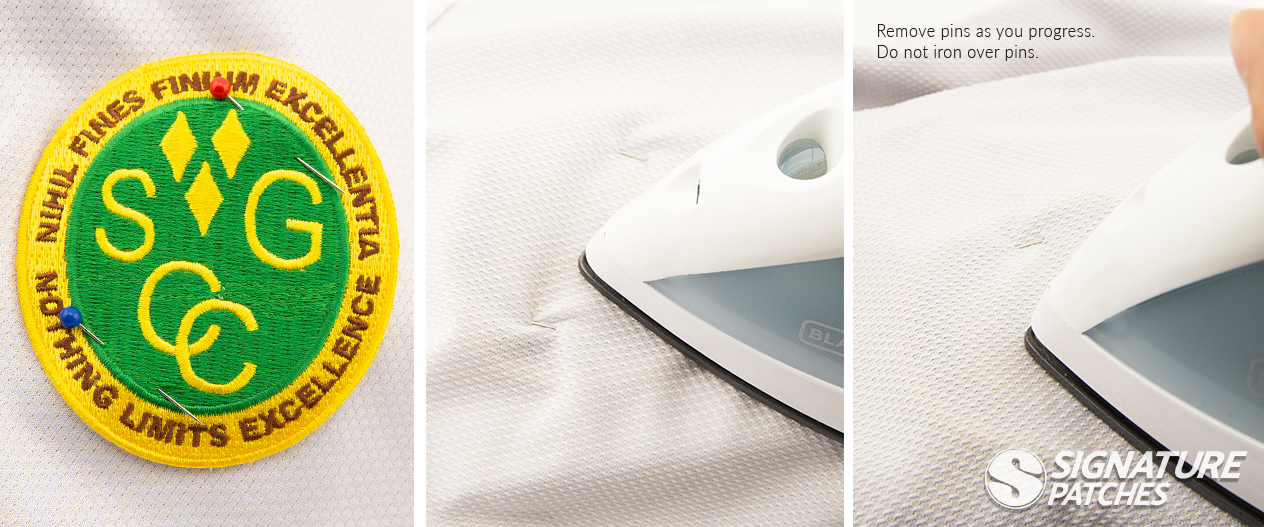
Patch Types and Iron On Attachments
Woven patches, with their unique materials and manufacturing process, need different heat settings to make sure they don’t burn when being attached. However, an iron on backing is every bit as much of an option for woven patches as it is for embroidered patches. In fact, all of the patches we offer are compatible with an iron on attachment option.
The only thing we can’t really offer with iron on attachments are hook and loop patches. Even though it would be much easier to iron the loop portion of the hook and loop fabric onto your uniform or other surface, these two different attachment options actually cannot be combined at our factory.
We also offer custom heat transfer patches. While the name may make these patches sound similar to iron on patches, they are not the same thing at all. Heat transfer patches are created via a process called dye sublimation. Meaning the artwork isn’t created using thread. However, the application of the artwork and the application of the patch are two different things. A heat transfer patch can also feature an iron on backing, but the two phrases are not interchangeable.
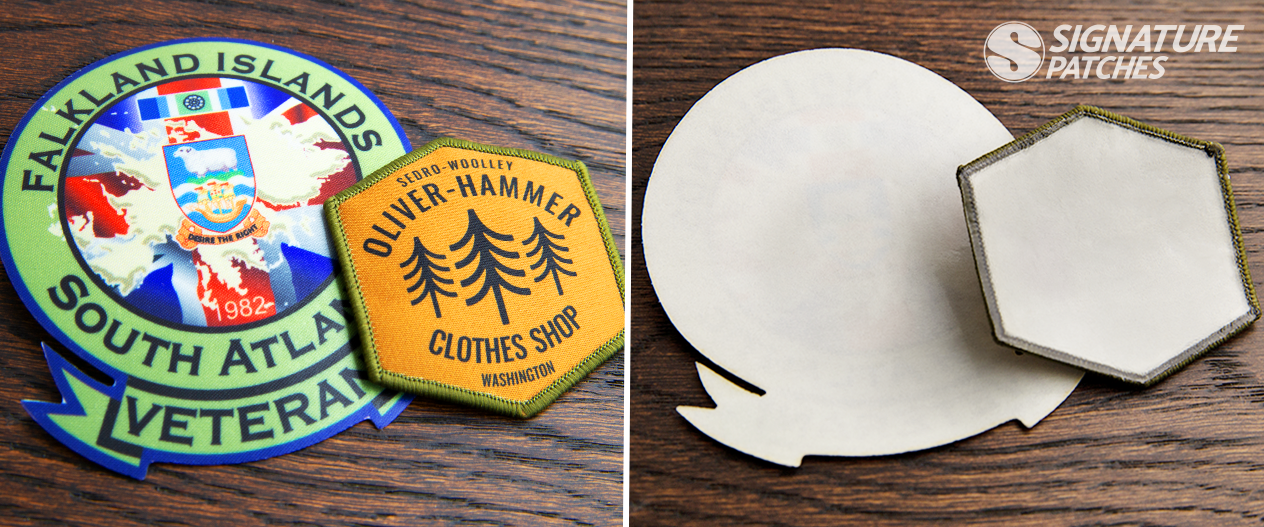
If You Can’t Stand the Heat …
The backing of patches intended to be ironed on and patches with a PVC backing are quite similar. When you place your order, you’ll specify which backing option you’d like to make use of, and we’ll be sure to specify which option you’ve selected when we send you proofs. However, if you’re ever unsure about whether the backing you’re looking at is iron on or PVC, just remember that iron on backings have a shine to them and are translucent, but PVC backing is opaque.
When you’re sure that your patch is capable of being attached with an iron, follow the above instructions, and your new custom patch will be with you for good.
